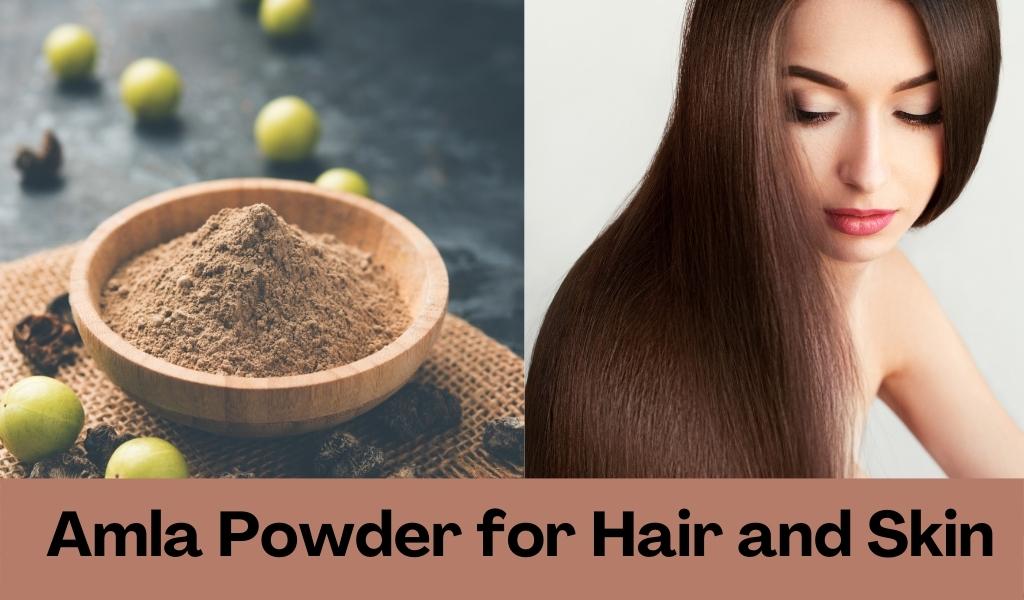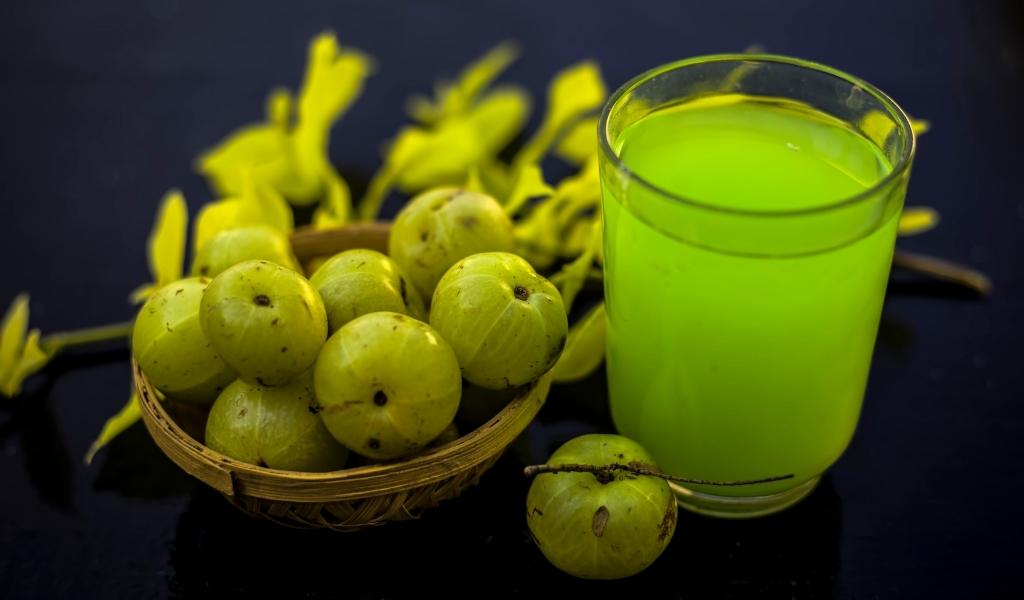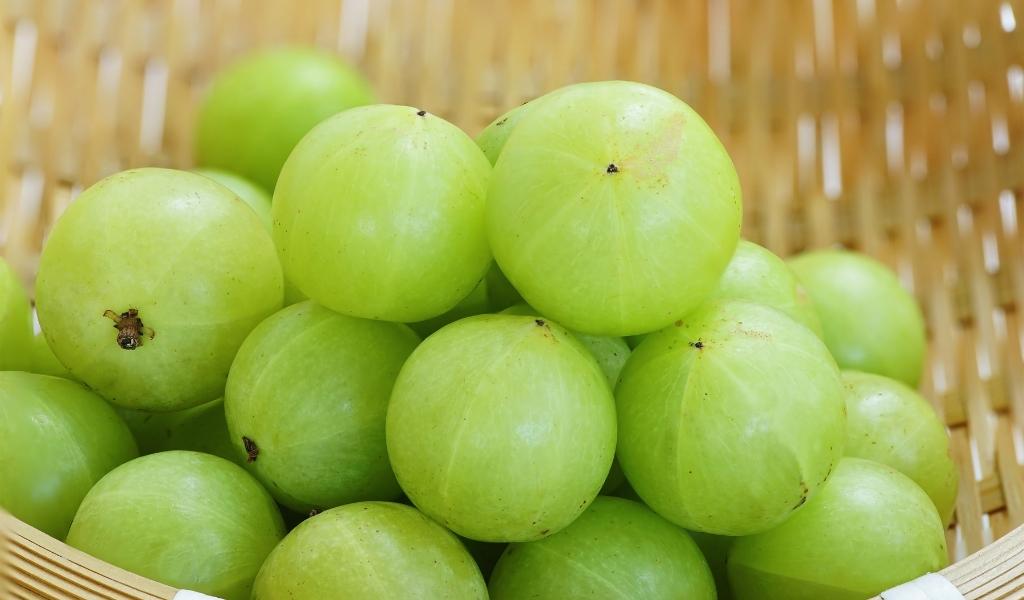Amla is an essential Ayurvedic herb that helps you get shinier, stronger, and more attractive hair. It is also commonly utilized in cosmetic products due to its therapeutic benefits and Ayurvedic character. If you are wondering why Amla Powder is so beneficial and how to utilize it, check out the information below.
The soft pulp of the Indian Gooseberry is used to make Amla powder. This plant is simple to cultivate in your backyard garden and adapts to any soil type. In addition to its hair and skin advantages, Amla powder offers anti-inflammatory effects.
Amla is traditionally been used as a medicine, fruit, and pickle in Indian families, as well as in everyday cuisine. It has a number of therapeutic characteristics that help to minimize the risk of hazardous illnesses and serious disorders.
A Natural Source of Vitamin C: It is high in Vitamin C, which helps to improve the immune system. It strengthens and thickens your blood vessels.
Cholesterol Regulator: Amla is an excellent cholesterol regulator. It lowers the risk of heart attack by controlling cholesterol.
Helpful in the Treatment of Hyperacidity and Stomach Ulcers: This fruit is also beneficial in the treatment of hyperacidity and stomach-related issues such as ulcers.
Amla includes tannins, phosphate, iron, and calcium, making them good for the whole body. Learn how to utilize Amla powder for hair and various methods to consume Amla-based products in the sections below.
Step 1: Find a carrier to combine Amla powder with
Amla powder necessitates the use of a carrier. You may use a variety of carriers, including eggs, vegetable oil, milk, water, and henna. Oil is the ideal carrier for Amla powder; simply mix oil with Amla powder and apply it to the hair. For optimal results, use any oil, including coconut and almond oils.
Sweet Almond Oil is applied to the skin and hair immediately. It includes vitamins and fatty acids that help hair develop and heal dry skin. The oil is extracted using the cold press method, which eliminates the need for heat and chemicals.

Step 2: In a pan, heat the oil for about 4-5 minutes
Warm the oil in the pan for 4-5 minutes, or until it becomes golden. When the oil has become brown, turn off the burner and allow it to settle. It is critical to allow the oil to settle before adding the Amla powder. While using the oil-Amla powder mixture, make sure the oil is warm enough to be applied to the scalp.
Step 3: Add 1 tablespoon of Amla powder
When the oil has settled, add 1 tablespoon of Amla powder and whisk thoroughly. After 2 minutes, strain the heated oil into a dish or oil container to remove any remaining powder. Before applying the oil, make a quick check to see if it is heated. It does not have to be hot or cold. Apply the mixture to your scalp with a cotton swab. Tap lightly on the scalp. Massage your head and hair.
Amla powder is high in antioxidants, which help to decrease cell damage and boosts immunity. The combination of Amla powder and oil can help you keep your hair’s natural colour and prevent premature greying. This provides skin with a young and smooth appearance. It helps with hair growth and strength.
Amla Powder aids in the slowing of skin ageing and hair greying. It improves skin by repairing cells from the inside. When combined with a carrier, this powder can be used on the skin, hair, nails, and other areas. Being high in Vitamin C helps to increase immunity and keep the body healthy. It is also good for preventing hair from greying.
Step 4: Allow the mixture to cool before applying heated oil to the scalp and hair
Apply the oil to your scalp using a cotton swab. Pour modest amounts of oil into an oil bottle for optimal use. This will ensure that no oil is wasted.
Many individuals may dislike the oil-Amla powder combination; nevertheless, you may do the same with water or milk. Simply combine 1 tablespoon of Amla powder with 4 tablespoons of either of the liquids and apply to the scalp.
People may also decide to make an Amla powder hair mask. Simply combine two raw eggs with two teaspoons of Amla powder and use it as a hair mask.
There are other juices, dried Amla, Pickled Amla, Amla lotions, and other baked goods available.
The health benefits of wild Amla juice are derived from the vitamin C-rich wild Amlas. This juice contains tannins and natural herbs, making it an immune booster and an antidote for improved digestion. This contains antioxidants that nourish the skin and hair. It also helps to straighten follicles and promotes hair growth. Amla juice made from wild Amlas has higher nutritional content and less water.

Why do you have to drink Amla water daily?
Juicing and diluting Amla or Indian Gooseberry with water is one of the greatest methods to incorporate into your diet. You should drink this Amla water on an empty stomach every morning to reap the various health advantages of Amla. Amla is a brilliant green fruit that is filled with several health benefits. In Hindi, it is known as Amla, while in Sanskrit, it is known as Amlaki. Because of its medicinal powers, this fruit is regarded as sacred in India and is used in a variety of religious rites. This superfood has a wealth of minerals and vitamins. It has eight times the vitamin C of an orange and around 17 times the antioxidant potential of a pomegranate. Amla water, which is loaded with vitamin C and other vitamins and minerals, is one of the most effective cures for healing a variety of disorders. Check it out!
How to Make Amla Water
Amla water preparation:
Strain with 1 teaspoon of Amla powder in a glass of water. Drink this water on an empty stomach every day for amazing effects. Amla powder may be made at home. Cut a few Amla fruits into little pieces and let them dry in the sun for a few days. Place the dried Amla pieces in a blender and puree them. Your handmade Amla powder is complete.
Nutritional breakdown
It is a good source of nutritional fibre and carbohydrates with only 60 calories per 100 grams. Amla contains vitamins A, C, pyridoxine, and riboflavin, as well as minerals such as sodium, potassium, carotene, calcium, copper, zinc, phosphorus, manganese, magnesium, and iron.
It treats a sore throat and a cold
Amla is well-known for its anti-viral qualities, which help the body’s immune system. When Amla is coupled with ginger and honey, is a good cure for sore throats and colds.
Aids in weight loss
It contains more amino acids, which stimulate metabolism and help to reduce fat formation in the body. Regular use of Amla water before a meal aids in weight loss.
Keeps diabetes under control
The chromium in Indian gooseberry aids in the reduction of blood sugar levels in the body, hence controlling diabetes.
Beneficial for digestion
Amla is a fiber-rich fruit that promotes regular bowel movements by keeping the gastrointestinal system clean. It functions as a natural laxative, aiding in the removal of toxic toxins from the body as well as relieving constipation and irritable bowel syndrome.
Amla’s skin advantages include healing pimples, reducing skin irritation, preventing and reducing pigmentation, increasing skin radiance, and having anti-ageing qualities.
This is how to include Amla Powder in your diet.
- Amla chutney
- Murabba made of Amla
- Amla candy
- Dried Amla
- Pickled Amla
- Amla juice
- Adding it to your dal
How much Amla Powder should I take per day?
To reap the benefits, consume 1 Amla fruit or 10-20 ml of Amla juice daily. You can also take 4 grams of Amla powder every day. However, taking more than this amount may produce adverse effects on your body.
Learn about the many methods to consume Amla for optimal health benefits.
Amla assists with a variety of health issues; because it is renowned for being a powerhouse of natural goodness since they are not only healthy but also help increase immunity due to antioxidants. Indian gooseberry, commonly known as Amla, is one such fruit that is effective for treating a variety of lifestyle disorders such as hair loss, digestion, and enhancing eyesight, among others.
And have you noticed that Amla is consumed in a variety of ways?
Amla can be consumed in a variety of ways, according to Ayurvedic practitioners.
It is consumed raw, pickled, as a dry powder, or in handmade sweet berry mixtures that are incredibly healthy. Even can be taken raw as a drink with jaggery, as Murabba, or in dips and pickles. It is a winter seasonal fruit.
Powder: On an empty stomach, consume 1 teaspoon of Amla powder with 1 teaspoon of honey or warm water in the morning.
Juice: Start your day with 20 ml of Amla juice and warm water.
Chyawanprash: Amla is the key component in Chyawanprash. So, one teaspoon of Chyawanprash with warm water can be taken in the morning on an empty stomach or two hours after a meal.
Experts advise making Murabba or pickle during the winter season using fresh Amlas and consuming it with our meals every day is highly recommended.
Fermented fruit: Amla can be fermented and consumed one to two times per day.
Amla candy: Cut Amla into pieces and dry them in the sun. You may preserve them and pop them like sweets once they have dried sufficiently.
Can we use Amla Powder for Hair Health?
Amla powder is created from crushed Indian gooseberry leaves. It has been used for millennia in Ayurvedic medicine to treat anything from diarrhoea to jaundice.
The powder has anti-inflammatory properties, prompting some to believe it is the next great thing in beauty.
But can taking Amla actually result in a healthier scalp and more beautiful locks? Here’s what the study indicates, along with instructions for making your own hair mask.
What are the advantages to your hair?
According to anecdotal evidence, Amla can
- nourish your scalp
- stimulate healthy hair development
- enhance the tone of henna hair colours
- eliminate greys
- raise volume
- cures dandruff
- Head lice treatment
Many of these claims have yet to be investigated in clinical trials, so their overall efficacy is unknown. According to the research, there has been much research into the impact of Amla powder on hair health.
Hair growth
The research discovered that using Amla oil topically boosted the rate of hair growth somewhat. The researchers believe this advantage is due to Amla’s high vitamin E content.
Vitamin E promotes proper circulation. Topically applying it may stimulate healing and cell regeneration in the affected region.
A pilot study conducted in 2017 discovered that a proprietary herbal cocktail comprising of Amla powder boost hair growth in people who suffered from hair loss.
Although these findings are encouraging, additional studies are required to determine how Amla powder affects human hair.
Overall well-being
Vitamin C, tannins, phosphorus, iron, and calcium are all abundant in Amla. All the nutrients are absorbed straight into your hair on topical treatment. This results in healthier locks.
It is worth mentioning that vitamin C and other antioxidants can aid in the regeneration of skin cells. This gives a healthier scalp, resulting in less dandruff and better hair.
Lice
A 2014 study discovered that a herbal treatment including Amla was more successful at treating head lice than numerous over-the-counter or OTC chemical remedies.
How to Apply
Amla powder is commonly used in the preparation of a topically applied paste or hair mask. If you want to try Amla powder on your hair, you can make your own or buy a ready-made remedy.
Making the mixture
If you want to make your own Amla paste, you will need to combine it with another component. Vegetable oils, plant oils, eggs, milk, water, and henna are all popular options.
PRO-TIP
Consider using coconut oil as your main oil. According to certain studies, it is more quickly absorbed into the hair shaft than mineral and sunflower oils.
Take the following steps if you’re using oil as your base:
In a small pan, pour 4 to 5 teaspoons of oil.
- Warm the oil on a low heat burner until it gets slightly brown.
- Add 1 tablespoon of Amla powder and bring to a boil.
- Turn off the heat and lay it aside to cool.
- Remove and discard any remaining powder.
- Massage the oil into your scalp and hair when it is warm to the touch but not hot.
If you do not want to use oil and powder, you can make a thicker paste with whole milk or water.
Apply 1 spoonful of Amla powder with 4 teaspoons of water. You can alter the ratio as needed to get the desired uniformity.
Some people combine eggs with Amla powder to form a protein-rich hair mask. To do this, combine 1/2 cup Amla powder with two eggs and apply.
Amla is already included in many henna hair colours. If your dye does not include Amla and you wish to add it, see an expert colourist. Many things must be considered, including your present hair colour and texture, desired colour, and products.

Patch testing
Before running a full program, always do a patch test. This assists you in determining the sensitivity of your skin and identifying any bad effects.
To do this:
- Combine 1/4 teaspoon Amla powder with equal parts warm water. Allow the powder to dissolve completely.
- Put in your combination to the inside of your forearm, or a dime-sized quantity of OTC solution.
- Apply a bandage to the affected area and wait 24 hours.
- If you see redness, hives, or other indications of irritation, cleanse the affected area and stop using the product.
- Else if you do not notice any negative effects after 24 hours, you should be OK to apply it elsewhere.
Application:
The application methods will differ depending on how you use Amla. Any product you use should be used according to the guidelines written on the label.
The following are some general guidelines:
- Spray the solution all over your head. Make sure to coat your scalp and hair ends
- Set aside the mixture for 45 minutes.
- Use lukewarm water to rinse your hair. Make sure that the solution is fully rinsed away.
- You should use an Amla hair mask twice or three times each week.
Risks and potential adverse effects of Amla Powder
Amla allergies have been reported, like hives and discomfort. A patch test may help you figure out how your skin will respond.
Women who are pregnant or nursing should consult their doctor before using this product. Amla powder should not be used on newborns or children.
In conclusion to Amla Powder
More study is done to know exactly how Amla powder improves scalp and hair health.
While Amla is safe to use as a general tonic, consult with your doctor and another healthcare practitioner before taking it to treat hair loss, lice, or any other underlying disease. They may advise using more established over-the-counter and prescription medications.



